#road data capture services
Explore tagged Tumblr posts
Text
Check Out Survey Services | AABSyS
Check out AABSyS Survey Services to increase your data insights. Identify pertinent information and make informed decisions. Learn more right now.
#construction survey drafting services#road data capture services#geodetic data survey services#manual survey services
0 notes
Text
How can I prove fault in a truck accident?
Truck accidents in Omaha can lead to severe injuries and complex legal challenges. Proving fault is crucial for securing compensation, and understanding the process can be daunting, especially for those unfamiliar with legal proceedings. This article provides a comprehensive guide on establishing fault in truck accidents, emphasizing the importance of hiring a local truck accident lawyer in Omaha.
Understanding Fault in Truck Accidents
Determining fault in truck accidents involves identifying the party responsible for causing the collision. This process requires a thorough investigation of various factors, including driver behavior, vehicle maintenance records, and adherence to traffic laws. In Omaha, specific regulations govern trucking operations, making it essential to work with professionals familiar with local laws.
Steps to Prove Fault in a Truck Accident
Gather Evidence at the Scene
Photographs and Videos: Capture images of vehicle positions, road conditions, traffic signs, and any visible damages.
Witness Statements: Collect contact information and statements from witnesses present at the scene.
Police Reports: Obtain a copy of the official accident report filed by law enforcement.
Examine Driver Records
Logbooks: Review the truck driver's logbooks to ensure compliance with hours-of-service regulations.
Licensing and Training: Verify the driver's qualifications and training records.
Inspect Vehicle Maintenance Records
Maintenance Logs: Check for regular maintenance and any reported mechanical issues.
Inspection Reports: Review records of routine inspections and any necessary repairs.
Analyze Electronic Data
Event Data Recorder (EDR): Access data from the truck's EDR, which records information like speed, braking, and engine performance.
GPS Data: Utilize GPS information to track the truck's route and movements leading up to the accident.
Consult Experts
Accident Reconstruction Specialists: Engage professionals to recreate the accident scenario and determine contributing factors.
Medical Experts: Obtain medical evaluations to link injuries directly to the accident.
The Importance of Hiring a Local Truck Accident Lawyer in Omaha
Navigating the complexities of truck accident cases requires specialized legal expertise. Hiring a local truck accident lawyer in Omaha offers several advantages:
Knowledge of Local Regulations: Local attorneys are well-versed in Nebraska's trucking laws and regulations, ensuring compliance and effective case strategies.
Familiarity with Local Courts: An Omaha-based lawyer understands the local court system, including procedures and personnel, which can be beneficial during litigation.
Access to Local Resources: Local attorneys have established networks with experts and investigators in the area, facilitating a thorough investigation.
Key Considerations When Choosing a Truck Accident Lawyer in Omaha
Selecting the right attorney is crucial for a successful outcome. Consider the following factors:
Expertise in Truck Accident Cases: Ensure the lawyer specializes in truck accident claims and has a track record of successful outcomes.
Success Rates: Inquire about the attorney's history of settlements and verdicts in similar cases.
Local Knowledge: A lawyer familiar with Omaha's legal landscape can navigate the system more effectively.
Tips for Evaluating Omaha-Based Truck Accident Lawyers
Check Local Reviews: Research client testimonials and reviews to gauge the attorney's reputation and client satisfaction.
Assess Credentials: Verify the lawyer's education, certifications, and memberships in professional organizations.
Discuss Case Strategies: During consultations, ask about the proposed approach to your case and assess their communication style.
Benefits of Hiring an Omaha Truck Accident Attorney
Understanding of Regional Regulations: Local attorneys are adept at navigating Nebraska's specific trucking laws.
Established Networks: They have connections with local experts, which can be instrumental in building a strong case.
Personalized Attention: A local lawyer is more accessible for meetings and updates, ensuring personalized service.
Key Features to Look for in a Truck Accident Lawyer
Experience with Truck Accident Cases
Strong Negotiation Skills
Trial Experience
Transparent Fee Structure
Compassionate Approach
Conclusion
Proving fault in a truck accident in Omaha necessitates a comprehensive approach and the expertise of a seasoned attorney. By hiring a local truck accident lawyer in Omaha, you benefit from their knowledge of regional regulations, local court systems, and established networks, all of which are pivotal in securing a favorable outcome. Take the time to evaluate potential lawyers based on their expertise, success rates, and client reviews to ensure you choose the best representation for your case.
For a directory of reputable attorneys in Omaha, visit the Nebraska State Bar Association.
3 notes
·
View notes
Text
The Heart of a Tornado ⚡ Tyler Owens
I do not own the movie Twisters or its characters, only my own original character and her family members. I also do not own the plot, only the additions I've made to it. This is going to be broken up into parts, Tyler not making an appearance until Part II.
Fandom: Twisters
Pairing: Tyler Owens x F!Reader
Word Count: 1,738
Part I
•─────⋅🌪️⋅─────• •─────⋅🌪️ ⋅─────•
Thunder roared and lightning flashed as Ada Scout made her way into the large building owned by the National Weather Service, her badge attached firmly to the pocket of her high-waisted, black flare-leg dress pants. Her stilettos clicked against the linoleum flooring as she neared the elevator that led to her office, her cream-colored long sleeve turtleneck sweater keeping her warm from the chilled air. She pressed the button to the twelfth floor and ran a manicured hand through her blown out dark brown hair, a sigh leaving her perfectly shaped and painted lips. Another day, another dollar. Another storm to report and not chase.
The elevator made a pinging sound as it reached its destination, Ada Scout being the first to step off. Heads turned towards her as she made her way to her office at the end of the hall, whispers following her. They all saw her as the rumored 'Queen of Storms,' a woman able to predict the deadliest of natural disasters as easily as she breathed. It was a title she both loved and hated, reminiscent of what an old friend back home used to call her. She took a seat behind her desk, setting her black leather designer bag on a hook under it and logged onto her computer to prepare for yet another day of tracking and reporting the weather.
"Miss Washington, there's someone here to see you." Her assistant Crosby said from the doorway, an apologetic smile on his youthful face and an even more apologetic cup of black coffee in his hand which he extended to her. She took it gratefully, giving him a nod of thanks before she inquired about the unexpected visitor.
"And who would that be, Crosby? I don't have any meetings until this afternoon." She lifted the cup to her lips, taking a small sip before setting it down on her desk. It was unusual for people to visit her office without appointments as she was normally on the road, so she found it odd someone had come to see her unscheduled.
"He says he's an old friend, Miss Washington." The young man said hesitantly, lifting his hand to scratch the back of his neck awkwardly. He was probably just as taken aback by an unannounced visitor as she was and she couldn't help but smile reassuringly.
"I see, thank you for informing me. You can send him in." She said before turning back to her computer to type in her login information, a radar of the entire United States showing on one screen and all types of data on the other. They were data collected from the storms, storm physics as they had called it back in her college years. A slight frown tugged at the corners of her lips as she noticed an increase in barometric pressure in the collection of states deemed 'Tornado Alley,' her home state of Arkansas included within them.
"Look at you all professional and boss-like." A familiar voice came from the doorway, capturing the attention of the woman. Ada Scout looked up and couldn't help but widen her eyes at the sight of her college friend Javier Rivera dressed in a suit, his once shoulder-length curls cut neatly around his neck and ears. She got to her feet, approaching the man to hug him. She hadn't seen him since the aftermath of the incident where they'd lost 3 of their friends in a field project gone wrong, the two of them and their friend Kate Cooper being the only to survive.
"Javi, what are you doing here?" She asked once they'd parted, her hands coming to rest on her hips in a way that was professional and yet, not intimidating. He shrugged, a charming grin on his face as he responded to her question.
"I didn't hear from you much after you moved so I asked Kate when I saw her a few days ago if she had. She said it had been a few months but that I could find you here. I actually wanted to discuss something important with you, a project I'm working on if you will." Ada Scout seemed shocked that he'd managed to see Kate let alone get her location from her, but she nodded and gestured to the seats in front of her desk.
"Of course, have a seat and we can discuss it. I must admit I'm surprised you got ahold of Kate, she kind of went radio silent on the world after the incident." Ada Scout said as she resumed her seat at her desk, crossing one knee over the other elegantly. Javier nodded, a grim smile on his handsome face that was more accentuated by the haircut and lack of facial stubble.
"So did you if I remember correctly. I had to find out from your Mama that you'd moved to Florida to track Hurricanes instead of Tornados for the National Weather Service." He said a bit tensely, but not in a way that was cruel or rude. It was as though he was stating an uncomfortable fact that she couldn't outright deny. She had cut off everyone after the EF5 tornado, unable to live with the guilt that clawed at her throat that her, Kate, and Javi had made it out alive when their friends hadn't. She shook her head to clear her thoughts and folded her hands in her lap politely.
"I won't deny that I did, I do apologize for that. I just-I couldn't handle the guilt right away, not knowing that we made it out when the others didn't. But enough about the past, what's this new project you speak of? You aren't still chasing storms, are you?" She asked, keeping her tone calm and even although she felt anything but.
"Actually I am, I'm working with Storm Par now to track tornadoes before they touch land to see if we're able to prevent them from creating mass amounts of damage back home in Oklahoma. I have access to military grade weaponry now from my time in the service and from willing investors and I came to see if maybe, just maybe you'd be willing to give me a week to help further my research. I proposed the idea to Kate too, but she denied me immediately. I just can't keep sitting and watching small towns like our own get destroyed by weather we should be able to predict the path of. To get ahead of so people are more prepared." He revealed, his words making the breath in Ada Scout's lungs still for a moment. He wanted her to come home for a week? To face the past she had tried to forget?
"Javi, I'm proud of you. Really, I am. But I haven't been back home in 5 years and while I'd love to help you figure out how to predict the path of a tornado and help decrease the damages they cause, as well as inform people of their development sooner, I can't just leave Florida. I have a job here, it's hurricane season. I do all of the reporting and research on them." She frowned.
"Please Ada, I know how important your job is here and I know how much you despise the idea of going back, but think about all the people we can help. That we can save." Javi leaned forward, placing his hands on his knees and Ada Scout sighed. He threw out a good point, one that tugged on her heart strings more than she cared to admit. If they could find a way to predict these vortexes, then maybe people wouldn't have to lose everything the way they had 5 years ago. Maybe they would've been able to save their friends if there had been more data.
"Fine. But I'm only staying for a week, I can't afford to give you more time than that. Not with it being hurricane season." Ada Scout said with a sigh, her blue eyes showing she was firm on her decision and wouldn't be willing to negotiate more time away from Florida. Javier grinned and jumped to his feet excitedly, clasping his hands together.
"Wonderful! I'll book your flight and motel room, you don't have to worry about a thing. Just bring that brilliant brain of yours." He said in a rush, already pulling out his phone to book their flights and accommodations. "I have a team of the best and brightest, you won't be disappointed in the slightest. They're intelligent, hard working, and brave."
Ada Scout nodded at his words. She didn't dispute that Javier had put together a team of the world's best and brightest Meteorologists, she just didn't know where she'd fit into the mix. Sure, she had studied Meteorology in Undergrad and pursued three Doctorates in Atmospheric and Oceanic Sciences, Earth Science, and Storm Physics. But she didn't chase storms anymore, especially not tornados like she had back in her younger years.
"Just let me know when my flight is so I can be prepared." She told her college friend, already typing up an email to her Boss to let him know she'd be using a week's worth of her PTO days this upcoming week. She knew he wouldn't mind, the old man was always pressing her to use them and take a vacation as all she did was work and go to the gym. He replied within seconds of her email being sent, letting her know he'd call her if he needed her and to enjoy her time back home. He also included a 'Be Safe' closing line, the man seeing his employees more as his own children than working machines. She stood from her desk to walk Javier to the elevator, her stilettos clicking as she walked. She didn't know how to feel about what she had just agreed to, how it would be being back after so many years, or what to think about chasing the same type of natural disaster that had caused her, Javier, and Kate to lose their closest friends.
"I'll see you Monday in Oklahoma!" Javier grinned before he exited her office and stepped into the elevator, waving enthusiastically as the doors closed and he descended to the Main Lobby. Ada Scout made her way back to her office, almost flopping down into her chair and putting her head in her manicured hands. What the hell had she just agreed to?
18 notes
·
View notes
Text
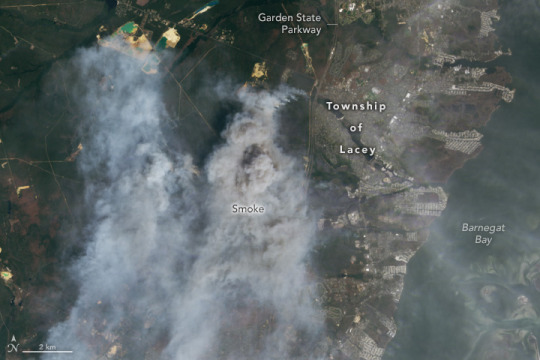
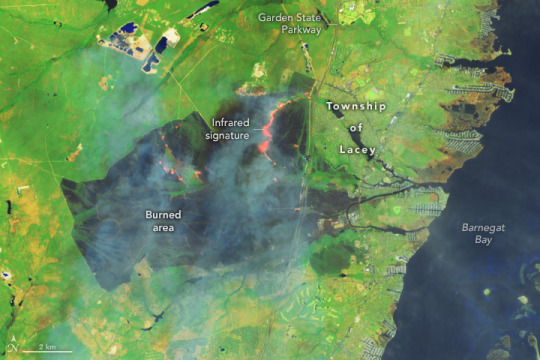
New Jersey Pine Barrens Ablaze
Wildland fires have long been integral to New Jersey’s Pinelands, or Pine Barrens. These highly flammable coastal forests host pitch pines and other trees that thrive with occasional burns.
Yet with hundreds of thousands of people living within these coastal forests, burns can shift rapidly from rejuvenating ecosystems to destroying infrastructure and threatening human life, particularly during droughts. A fire that began in a wildlife management area near Waretown on April 22, 2025, offered a stark reminder of this delicate balance. Within two days, the fire had grown into one of the largest fires New Jersey has seen in decades.
The OLI-2 (Operational Land Imager-2) on Landsat 9 captured images of the Jones Road fire on April 23. In the natural-color scene (top), thick smoke obscures the fire’s mark on the land below. The burned area is evident in the false-color image (above) showing shortwave infrared, near infrared, and visible light (OLI bands 6-5-3). This band combination makes it easier to identify unburned vegetated areas (green) and the recently burned landscape (brown). A sand mine is visible in the upper left of the images. A broader view of the natural-color image is below.

An ongoing drought made the Pine Barrens particularly susceptible to fire in spring 2025. An April analysis of shallow groundwater and soil moisture using NASA observations from the GRACE (Gravity Recovery and Climate Experiment) and GRACE-FO (GRACE Follow On) satellites showed anomalously dry conditions, according to data posted by the National Drought Mitigation Center. At the time of the fire, the U.S. Drought Monitor had classified drought in the region as “severe.”
According to news reports, the fast-moving fire led to evacuations of large numbers of people from Lacey and Ocean townships, threatened many homes, and sent smoke wafting toward New York City. At times, officials closed both the Garden State Parkway and Route 532. As of April 24, more than 15,000 acres had burned, and the fire was 50 percent contained, according to the New Jersey Forest Fire Service. As of that date, all evacuation orders had been lifted and the Garden State Parkway had been reopened, the fire service noted.
NASA’s satellite data is part of a global system of observations that are used to track fire behavior and analyze emerging trends. Among the real-time wildfire monitoring tools that NASA makes available are FIRMS (Fire Information for Resource Management System) and the Worldview browser.
NASA Earth Observatory images by Wanmei Liang, using Landsat data from the U.S. Geological Survey. Story by Adam Voiland.
2 notes
·
View notes
Text
I’m not sure how reliably I’ll be able to keep up with it, but I’ve been wanting to start posting weekly or monthly Good News compilations, with a focus on ecology but also some health and human rights type stuff. I’ll try to keep the sources recent (like from within the last week or month, whichever it happens to be), but sometimes original dates are hard to find. Also, all credit for images and written material can be found at the source linked; I don’t claim credit for anything but curating.
Anyway, here’s some good news from the first week of March!
1. Mexican Wolf Population Grows for Eighth Consecutive Year
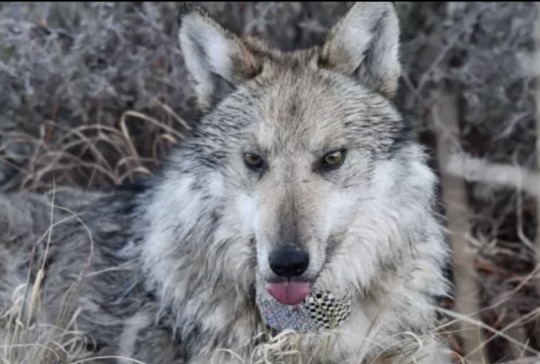
““In total, 99 pups carefully selected for their genetic value have been placed in 40 wild dens since 2016, and some of these fosters have produced litters of their own. While recovery is in the future, examining the last decade of data certainly provides optimism that recovery will be achieved.””
2. “Remarkable achievement:” Victoria solar farm reaches full power ahead of schedule
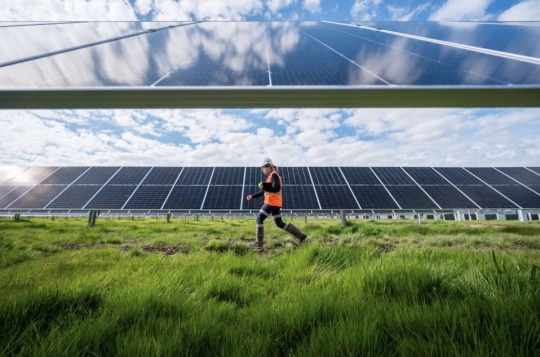
“The 130MW Glenrowan solar farm in Victoria has knocked out another milestone, reaching full power and completing final grid connection testing just months after achieving first generation in late November.”
3. UTEP scientists capture first known photographs of tropical bird long thought lost
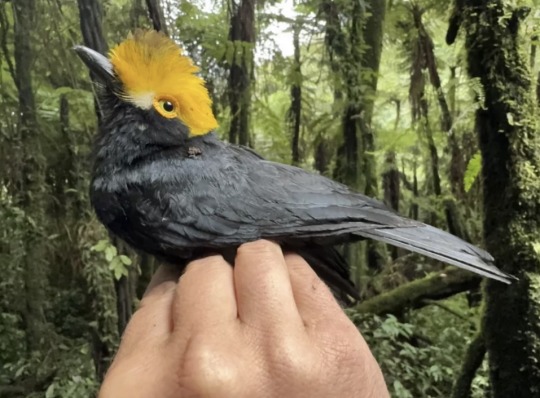
“The yellow-crested helmetshrike is a rare bird species endemic to Africa that had been listed as “lost” by the American Bird Conservancy when it hadn’t been seen in nearly two decades. Until now.”
4. France Protects Abortion as a 'Guaranteed Freedom' in Constitution
“[A]t a special congress in Versailles, France’s parliament voted by an overwhelming majority to add the freedom to have an abortion to the country’s constitution. Though abortion has been legal in France since 1975, the historic move aims to establish a safeguard in the face of global attacks on abortion access and sexual and reproductive health rights.”
5. [Fish & Wildlife] Service Approves Conservation Agreement for Six Aquatic Species in the Trinity River Basin
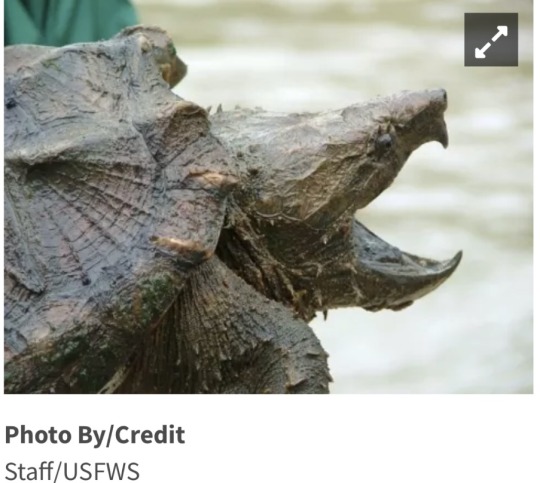
“Besides conserving the six species in the CCAA, activities implemented in this agreement will also improve the water quality and natural flows of rivers for the benefit of rural and urban communities dependent on these water sources.”
6. Reforestation offset the effects of global warming in the southeastern United States

“In America’s southeast, except for most of Florida and Virginia, “temperatures have flatlined, or even cooled,” due to reforestation, even as most of the world has grown warmer, reports The Guardian.”
7. Places across the U.S. are testing no-strings cash as part of the social safety net
“Cash aid without conditions was considered a radical idea before the pandemic. But early results from a program in Stockton, Calif., showed promise. Then interest exploded after it became clear how much COVID stimulus checks and emergency rental payments had helped people. The U.S. Census Bureau found that an expanded child tax credit cut child poverty in half.”
8. The Road to Recovery for the Florida Golden Aster: Why We Should Care
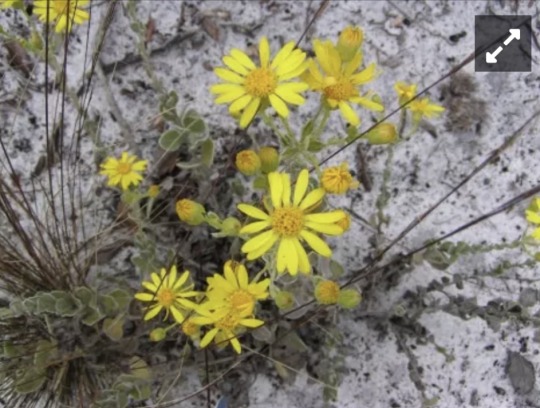
“After a five-year review conducted in 2009 recommended reclassifying the species to threatened, the Florida golden aster was proposed for removal from the Federal List of Endangered and Threatened Plants due to recovery in June 2021, indicating the threats to the species had been reduced or eliminated.”
9. A smart molecule beats the mutation behind most pancreatic cancer
“Researchers have designed a candidate drug that could help make pancreatic cancer, which is almost always fatal, a treatable, perhaps even curable, condition.”
10. Nurses’ union at Austin’s Ascension Seton Medical Center ratifies historic first contract
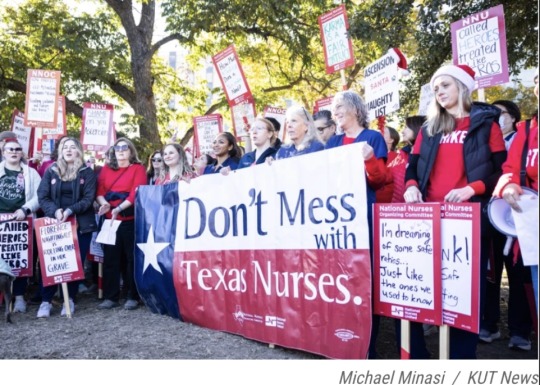
“The contract, which NNOC said in a news release was “overwhelmingly” voted through by the union, includes provisions the union believes will improve patient care and retention of nurses.”
This and future editions will also be going up on my new Ko-fi, where you can support my art and get doodled phone wallpapers! EDIT: Actually, I can't find any indication that curating links like this is allowed on Ko-fi, so to play it safe I'll stick to just posting here on Tumblr. BUT, you can still support me over on Ko-fi if you want to see my Good News compilations continue!
#hopepunk#good news#wolf#wolves#mexican wolf#conservation#solar#solar power#birds#abortion#healthcare#abortion rights#reproductive rights#reproductive health#fish and wildlife#turtles#alligator snapping turtle#snapping turtle#river#reforestation#global warming#climate change#climate solutions#poverty#social safety net#flowers#endangered species#cancer#science#union
16 notes
·
View notes
Text
Professional Dashcam Installation Services to Enhance Fleet Safety

Fleet safety is more important than ever. With the rise in road incidents and the growing need to protect both drivers and assets, Dashcam Installations have become a vital tool for fleet operators. Whether you manage a small fleet or a large operation, having dashcams installed in your vehicles can greatly improve safety and reduce risks. Our professional Camera Installation in the Car provide you with reliable monitoring, real-time insights, and dependable incident recording to keep your fleet secure.
Why Dashcam Installations Are Crucial for Fleets
Dashcams do more than just record video. They offer an extra layer of security for fleet managers and drivers by capturing high-definition footage of the road and driver behavior. This data can be invaluable in preventing accidents, addressing risky driving habits, and protecting businesses from liability claims. Here are some key reasons why dashcams are essential for fleets:
1. Accurate Collision Recording
Accidents can happen at any time. Dashcams provide clear, real-time footage of incidents, which helps determine the cause of accidents and protects your business from false claims. This footage can be crucial in legal cases, ensuring that your drivers are exonerated when they are not at fault.
2. Driver Behavior Monitoring
Dashcams help fleet managers monitor driver behavior. Alerts for unsafe practices such as speeding, harsh braking, tailgating, or not wearing a seatbelt can be sent in real time. This monitoring helps reduce risky behavior and promotes safer driving habits.
3. Risk Mitigation
Dashcams reduce the risk of accidents and fraudulent insurance claims by providing clear video evidence. Having dashcams installed can also lead to lower insurance premiums for your fleet, saving your business money over time.
4. Compliance and GPS Integration
Many dashcam systems come with GPS tracking, allowing fleet managers to pinpoint the exact location of any critical event. This feature is essential for ensuring compliance with fleet safety standards and for optimizing routes and delivery times.
The Value of Fleet Dash Cams
Investing in Fleet Management Technology, particularly dash cameras with GPS tracking, is a critical decision for any business operating a fleet of vehicles. The decision often comes down to balancing the initial investment against the potential returns in terms of safety, efficiency, and operational improvement. Dash cameras, like JimiIoT's dashcam Dual-Channel Dashcam, provide a comprehensive solution that aligns with modern fleet management needs.
Dash cameras have become an essential tool in Fleet Tracking System Installation, providing real-time insights into road conditions, driver behavior, and incidents that can significantly impact your business. The dashcam stands out with its dual-channel video capability, offering a complete view of both the road ahead and the vehicle's interior. This technology not only ensures safety but also contributes to enhancing operational efficiency.
Key Benefits of Investing in the Dashcam
Accident Reduction and Evidence Collection
The dashcam captures high-quality footage in real time, which can be crucial during accidents. This footage can quickly resolve disputes, expedite insurance claims, and protect your company from fraudulent claims. Concrete evidence from dash cams can lead to lower insurance premiums and overall cost reductions.
Driver Behavior Monitoring
One significant advantage of the dashcam is its ability to monitor driver behavior. By capturing instances of speeding, harsh braking, and other risky actions, fleet managers can identify patterns and take corrective measures. Over time, this results in a safer driving culture within your fleet.
Maintenance Cost Reduction
Real-time monitoring through the dashcam can alert fleet managers to potential vehicle issues before they become critical. Addressing problems early reduces the chances of costly breakdowns and extends your vehicle's lifespan. Data-driven preventive maintenance keeps your fleet in top condition.
Enhanced Productivity
With advanced tracking and monitoring capabilities, the dashcam enables better route planning and reduces unnecessary downtime. Improved scheduling leads to higher productivity, timely deliveries, and increased customer satisfaction.
Driver Training and Development
Video footage from the dashcam can be a valuable training tool. Reviewing incidents allows managers to provide targeted feedback, helping drivers improve their skills. This ongoing training fosters a more competent driving team, further reducing risks and operational costs.
Litigation Protection
In legal disputes, having clear, objective footage from the dashcam is invaluable. It can protect your business from false claims and prevent costly settlements, safeguarding your reputation and financial stability.
Insurance Discounts
Many insurance providers recognize dashcams role in reducing risks and offer discounts to fleets that use them. The dashcam's advanced features can help your business qualify for these discounts, further offsetting the initial investment.
Regulatory Compliance
Staying compliant with industry regulations is essential for avoiding fines. The dashcam ensures your fleet operates within legal parameters by providing verifiable data on driver behavior, vehicle location, and operational conditions.
Data-Driven Decision Making
The dashcam is more than a camera; it's a powerful tool for collecting and analyzing data. Insights gained from this data help fleet managers make informed decisions to improve operational efficiency, reduce costs, and increase profitability.
Secure Your Fleet with Our Dashcam Installation Services
When it comes to fleet safety, every detail matters. Proper dashcam installation can make a significant difference in protecting your drivers, reducing risks, and ensuring compliance with safety standards. Our team is dedicated to providing high-quality dashcam installation services that meet the unique needs of your fleet.
By choosing our professional services, you can expect:
Expert installation: Ensuring optimal performance and reliability.
Customized solutions: Tailored to your fleet size and needs.
Ongoing support: We’re here to help you maintain your dashcam systems.
Don’t leave your fleet’s safety to chance. Contact us today to schedule your dashcam installation and take the first step toward a safer, more efficient fleet. Protect your drivers, safeguard your business, and gain peace of mind with our expert dashcam installation services.
The Role of Orbital Installs
Orbital Installation Technologies plays a crucial role in providing professional dashcam installation services that ensure your fleet’s safety systems are functioning at their best. Our experienced team specializes in installing a wide range of dashcam systems, from single-camera setups to advanced multi-channel solutions with GPS tracking and cloud connectivity. We understand the importance of precision and reliability in dashcam installations, which is why we tailor our services to fit your fleet's unique needs.
With years of expertise, Orbital Installs ensures that every dashcam is properly positioned and configured to capture critical footage. Our commitment to quality installation means fewer technical issues, better performance, and greater peace of mind for fleet operators. Trust Orbital Installs to handle your dashcam installation professionally and efficiently, so you can focus on running a safer and more productive fleet.
FAQs
1. What types of vehicles can you install dashcams in? We can install dashcams in all types of vehicles, including cars, vans, trucks, and buses. Our team has experience with a variety of vehicle sizes and configurations to ensure a seamless installation process.
2. How long does a typical dashcam installation take? The installation time varies depending on the type of system and the vehicle. On average, a basic dashcam installation takes about 1-2 hours. More complex multi-camera systems may require additional time.
3. Can I access the dashcam footage remotely? Yes, many modern dashcam systems offer cloud-connected features that allow you to access footage remotely. This enables you to review incidents in real-time from any location with an internet connection.
4. Do you provide maintenance and support after the installation? Absolutely! We provide ongoing support to ensure your dashcam systems continue to operate efficiently. If you encounter any issues, our team is available to help with troubleshooting and maintenance.
#autos#entrepreneur#automobile#boston fleet#fleet services#fleetsolutions#orbitalinstallationstechnologies#dashcam#camera#dash cam#installation#fleet management solution#eld mandate#apc#Car camera#car camera#auto#truck
3 notes
·
View notes
Text
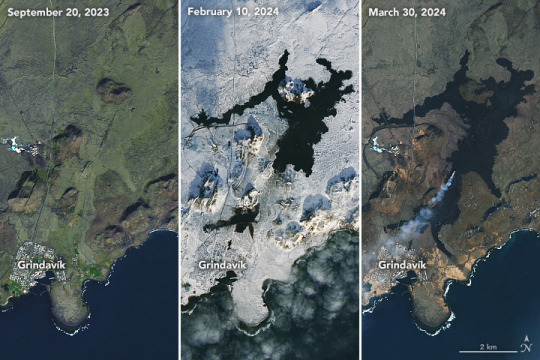
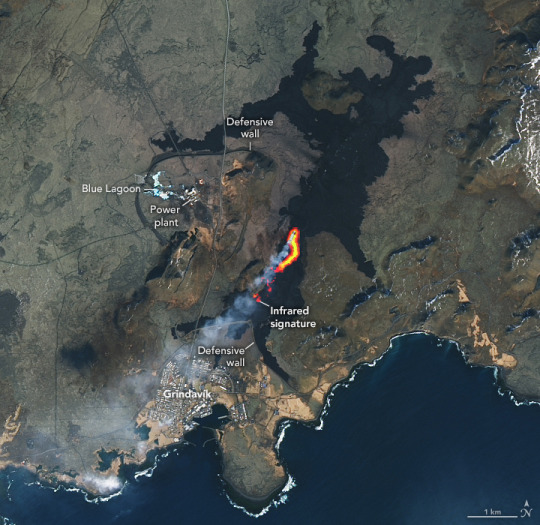
Fresh Flows Across Iceland
"Lava poured from a volcanic fissure near the town of Grindavík, Iceland, in spring 2024. The eruption, which began on March 16 and remained active over two weeks later, was the largest in a string of four volcanic events on the Reykjanes peninsula starting in December 2023.
The OLI (Operational Land Imager) on Landsat 8 captured this image of the ongoing eruption on March 30, 2024. The natural color scene is overlaid with an infrared signal to help distinguish the lava’s heat signature. The active part of the fissure and the origin of a volcanic plume are apparent. While the eruption was still active at this time, additional satellite and ground observations indicated it was likely waning.
The eruption began at 8:23 p.m. local time on March 16, the Icelandic Met Office (IMO) reported. A fissure nearly 3 kilometers (2 miles) long quickly opened in a similar location to the February 2024 eruption. Hundreds of people at the Blue Lagoon, as well as a small number in Grindavík, were evacuated within about 30 minutes of the eruption starting.
In the days that followed, lava flowed toward infrastructure such as water pipes and roads, the town of Grindavík, and the ocean. Human-constructed barriers of earth and rock diverted lava away from town, although a flow extended across one road. Officials were initially concerned that lava would reach the coast and cool rapidly upon contacting water. This could have posed additional hazards such as the production of hydrogen chloride gas, but the flow stopped short.
This Landsat image comparison shows the recent changes on the Reykjanes peninsula. In September 2023 (left), the area was quiet volcanically. By February 10, 2024 (center), three separate fissure eruptions had occurred. The footprint of new basaltic rock grew in March 2024 (right) as new lava spanned nearly 6 square kilometers (2.3 square miles), according to the IMO.
Like the eruptions that preceded it, the spring 2024 event was effusive, not explosive. Effusive eruptions tend to emit minimal ash, and their plumes typically contain water vapor, sulfur dioxide, carbon dioxide, and small amounts of other volcanic gases.
This eruption did not disrupt air travel, but sulfur dioxide (SO2) emissions were hazardous locally at times. Workers evacuated the power plant north of Grindavík on March 18 due to gas pollution, the Icelandic National Broadcasting Service reported. The SO2 emissions from this eruption were forecast to drift across the United Kingdom and northern Europe, according to models based on satellite observations, but at an altitude too high to affect surface air quality.
Unlike the other recent eruptions in this region, the springtime event stretched out over weeks rather than a couple of days. The reason for the relatively prolonged eruption may be that magma now has an easier path to the surface, experts suggested in news reports. Others think that magma is no longer accumulating in the shallow magma chamber beneath the area and that this eruption could be the last in the longer cycle.
NASA Earth Observatory images by Lauren Dauphin, using Landsat data from the U.S. Geological Survey. Story by Lindsey Doermann."
And to think we were there in September about the time the first photo was made! The main road connecting Grindavik to the remainder of Iceland has been cut in two places. According to their website, the popular tourist attraction Blue Lagoon is closed due to "unfavourable air quality" but is scheduled to reopen tomorrow 11 April.
Wish I could hop on a plane to see this in person, but other obligations preclude such a trip anytime soon.
7 notes
·
View notes
Text

Excerpt from this story from Anthropocene Magazine:
I write about the climate and energy for a living and even I can’t quite wrap my head around how cheap low-carbon power technologies have gotten. The cost of onshore wind energy has dropped by 70% over just the last decade, and that of batteries and solar photovoltaic by a staggering 90%. Our World in Data points out that within a generation, solar power has gone from being one of the most expensive electricity sources to the cheapest in many countries—and it’s showing little signs of slowing down.
So where does this all end?
Back in the 1960s, the nuclear industry promised a future in which electricity was too cheap to meter. Decades later, the same vision seems to be on the horizon again, this time from solar. It seems, well, fantastic. Perhaps (almost) free renewable power leads to climate utopia. Then again, should we be careful what we wish for?
The Road To Decarbonization Is Paved With Cheap Green Power
1. More renewables = less carbon. The math isn’t complicated. The faster we transition to clean energy, the less carbon dioxide we’re adding to the atmosphere and the fewer effects of global warming we will suffer.While humanity is still emitting more greenhouse gases than ever, the carbon intensity of electricity production has been dropping for well over a decade.
2. Cheap, clean power also unlocks humanitarian goals. Modern civilization rests on a foundation of electricity. Beyond its obvious uses in heating, cooling, cooking, lighting and data, electricity can decarbonize transportation, construction, services, water purification, and food production. Increasing the supply and reducing the cost of green electricity doesn’t just help the climate, it improves equity and quality of life for the world’s poorest.
3. Scrubbing the skies will take a lot of juice. Once we get emissions under control, it’s time to tackle the mess we’ve made of the atmosphere. Today’s direct air capture (DAC) systems use about two megawatt hours of electricity for every ton of CO2 plucked from fresh air. Scale that up to the 7 to 9 million tons we need to be removing annually in the US by 2030, according to the World Resources Institute, and you’re looking at about 0.5% of the country’s current energy generation. Scale it again to the nearly 1,000 billion tons the IPCC wants to sequester during the 21st century, and we’ll need every kilowatt of solar power available—the cheaper the better.
Cheap Power Has Hidden Costs
1. Cheap technology doesn’t always mean cheap power. If solar cells are so damn cheap, why do electricity bills keep rising? One problem is that renewables are still just a fraction of the energy mix in most places, about 20% in the US and 30% globally. This recent report from think-tank Energy Innovation identifies volatility in natural gas costs and investments in uneconomic coal plants as big drivers for prices at the meter. Renewables will have to dominate the energy mix before retail prices can fall.
2. The cheaper the power, the more we’ll waste. Two cases in point: cryptocurrency mining and AI chat bots. Unless we make tough social and political decisions to fairly price carbon and promote climate action, the market will find its own uses for all the cheap green power we can generate. And they may not advance our climate goals one inch.
3. Centuries of petro-history to overcome. Cheap power alone can only get us so far. Even with EVs challenging gas cars, and heat pumps now outselling gas furnaces in the US, there is a monumental legacy of fossil fuel systems to dismantle. Getting 1.5 billion gas cars off the world’s roads will take generations, and such changes can have enormous social costs. To help smooth the transition, the Center for American Progress suggests replacing annual revenue-sharing payments from coal, oil, and natural gas production with stable, permanent distributions for mining and oil communities, funded by federal oil and gas revenue payments.
5 notes
·
View notes
Text

Gsource Technologies excels in Lidar and Photogrammetry Services, offering precision in Roads and Powerline Models, Utility Mapped Models, PIM (Product Information Modeling), and Surface Models. Leveraging advanced technology, they provide comprehensive solutions, including 2D Linework, CAD Conversions, Automated Contours, and Topo Creation. Their Lidar services capture detailed geographical data, ensuring accuracy in terrain representation, while Photogrammetry enhances mapping with high-resolution images.
Gsource Technologies stands out by delivering utility-mapped models, crucial for infrastructure planning, and PIM for efficient product data management. The company's commitment to excellence is evident in their adept CAD conversions and automated contour generation, facilitating seamless integration into diverse projects. Gsource Technologies sets the benchmark in Lidar and Photogrammetry services, driving innovation in geospatial solutions.
#gsourcetechnologies#architecturedesigns#engineeringdesigns#lidarservices#photogrammetryservices#caddrafting
2 notes
·
View notes
Text
Enhancing Efficiency and Accuracy: The Advantages of Drone Surveyors in Coleford
youtube
In today's rapidly evolving world, technological advancements have revolutionized various industries, including surveying. Drone surveyors have emerged as an innovative solution, bringing a multitude of benefits to the field. This article explores how drone surveyors in Coleford, South West, are transforming traditional surveying practices, enhancing efficiency, and delivering accurate results.
Unleashing the Potential of Drone Surveyors Drone surveyors utilize unmanned aerial vehicles (UAVs) equipped with high-resolution cameras and advanced sensors to capture detailed imagery and data of vast areas quickly and efficiently. These cutting-edge devices are particularly beneficial for surveying projects in Coleford's challenging terrains, where conventional surveying methods might face limitations. With their ability to navigate difficult landscapes and reach inaccessible areas, drone surveyors offer a comprehensive and cost-effective solution.
Enhanced Efficiency and Time Savings One of the primary advantages of employing drone surveyors in Coleford is the significant improvement in efficiency and time savings. Traditional surveying methods often require manual labor, extensive equipment setup, and lengthy data collection processes. In contrast, drones can rapidly cover large areas within a short time, eliminating the need for labor-intensive ground surveys. By automating data collection, drone surveyors enable faster project completion, saving both time and resources for clients.
Superior Accuracy and High-Quality Data Accuracy is paramount in surveying, and drone surveyors excel in this aspect. Equipped with advanced imaging technology, drones capture high-resolution aerial images that provide accurate and detailed information for mapping, modeling, and analysis. The collected data can be processed using specialized software to create precise 3D models, topographic maps, and volumetric calculations. By minimizing human error and offering a more comprehensive perspective, drone surveyors deliver reliable and actionable insights to clients in Coleford.
Safety and Environmental Benefits Drone surveyors prioritize safety and reduce risks associated with traditional surveying methods. By replacing the need for personnel to traverse treacherous terrain, drones minimize the chances of accidents and injuries. Additionally, drone surveys minimize disturbance to the environment, as they operate without the need for extensive ground disruption. This environmentally-friendly approach aligns with the growing global emphasis on sustainability and responsible practices. South West Surveys' utilization of drone surveyors in Coleford demonstrates their commitment to both safety and ecological stewardship.
Applications in Various Industries Drone surveyors find applications across diverse industries, further exemplifying their versatility. In construction, drones aid in site analysis, progress monitoring, and quality control. Infrastructure planning benefits from the accurate data provided by drone surveys, assisting in road design, pipeline routing, and urban planning. In agriculture, drones contribute to precision farming, enabling crop health assessments and yield optimization. The renewable energy sector leverages drone surveys for site suitability analysis and maintenance inspections. The possibilities are vast, and drone surveyors are instrumental in delivering efficient and accurate results across multiple sectors.
Conclusion The utilization of drone surveyors in Coleford has revolutionized the field of surveying, enhancing efficiency, accuracy, and safety. South West Surveys' adoption of this cutting-edge technology reflects their commitment to delivering high-quality services. By harnessing the power of drone surveyors, clients in Coleford can expect timely, precise, and cost-effective surveying solutions for their projects.
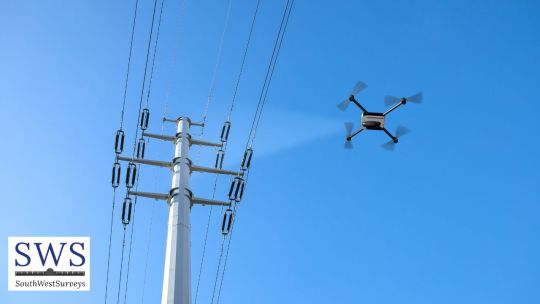
#Drone Surveyors Coleford#Drone Surveyors Patchway#Drone Surveyors Gloucestershire#Drone Surveyors Gloucester#Drone Surveyors Dursley#Drone Surveyors Kingswood#Drone Surveyors Tetbury#Drone Surveyors Tewkesbury#Drone Surveyors Yate#Drone Surveyors Moreton-in-Marsh#Youtube
2 notes
·
View notes
Text
Survey Services | AABSyS
Check out AABSyS Survey Services to improve your data insights. Find important facts and come to wise decisions. Find out more now.
#construction survey drafting services#road data capture services#geodetic data survey services#manual survey services
0 notes
Text
Land Surveying Gold Coast: Mapping Progress with Precision
Land development and construction projects require a strong foundation built on accuracy and precision. In Australia’s vibrant coastal region, land surveying Gold Coast plays a crucial role in shaping the future of infrastructure, real estate, and environmental planning. With a unique combination of urban growth, natural beauty, and strict regulatory standards, the Gold Coast demands top-tier surveying solutions that ensure both legal compliance and development efficiency.
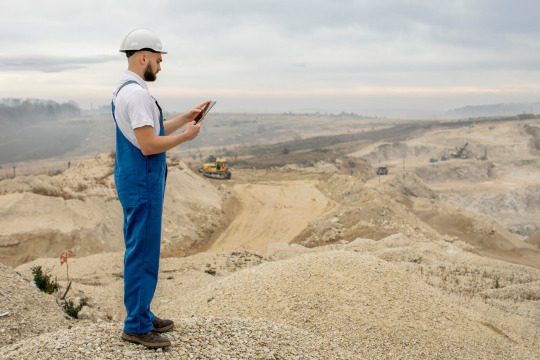
The Role of Land Surveying in Property Development
Land surveying Gold Coast is an essential component in the lifecycle of any property-related venture. Surveying services provide critical data that supports planning, design, construction, and legal documentation. From residential subdivisions to large-scale commercial developments, accurate land measurements and mapping are indispensable.
Key functions of land surveying in the Gold Coast include:
Boundary determination and identification
Subdivision and strata titling
Construction set-out and alignment
Topographical and contour mapping
Easement and encumbrance documentation
Infrastructure planning and monitoring
Types of Land Surveys Used in the Gold Coast
Several types of land surveys are employed depending on the specific project and site requirements:
Cadastral Surveys: These involve the legal determination of land boundaries and are necessary for property ownership and subdivision registration.
Engineering Surveys: Used during the construction phase to ensure precise alignment and levels of infrastructure such as roads, bridges, and utilities.
Topographic Surveys: These map the natural and man-made features of a land parcel, vital for architectural and landscape planning.
Hydrographic Surveys: Particularly important in coastal areas like the Gold Coast, these surveys chart water bodies and shorelines for marine development or flood planning.
Technology Transforming Land Surveying Gold Coast
Innovation continues to elevate the standards of land surveying Gold Coast. The integration of advanced technology enables greater accuracy, faster data acquisition, and more comprehensive reporting. Key technologies include:
GPS and GNSS: Satellite systems provide high-precision location data for boundary demarcation and asset positioning.
Drones (UAVs): Aerial surveys using drones allow for detailed 3D terrain models and site overviews with minimal disruption.
LiDAR (Light Detection and Ranging): This laser-based technology captures minute variations in land elevation, ideal for urban and environmental applications.
3D Laser Scanning: Enables precise rendering of structures and landscapes, useful for renovations, documentation, and clash detection in construction.
Regulatory Compliance and Surveying Standards
Australia enforces strict guidelines for land development, and land surveying Gold Coast professionals must adhere to both national and state regulations. Compliance with Queensland’s surveying standards ensures legal validity, prevents boundary disputes, and facilitates transparent transactions. Licensed surveyors in the Gold Coast operate under the Surveyors Act 2003 (QLD) and must maintain registration with the Surveyors Board of Queensland.
Environmental and Urban Planning Considerations
The Gold Coast is known for its delicate balance between nature and urban growth. Land surveying Gold Coast supports sustainable development by integrating environmental data into planning decisions. Surveyors often work in conjunction with town planners, ecologists, and civil engineers to design projects that preserve ecological integrity while accommodating population expansion.
Surveys help mitigate risks associated with:
Coastal erosion and sea level rise
Floodplain development
Vegetation preservation zones
Heritage conservation areas
Benefits of Professional Land Surveying on the Gold Coast
Engaging professional surveying services provides a range of benefits:
Risk Reduction: Accurate boundary data prevents costly legal disputes.
Project Efficiency: Precise measurements streamline design and construction workflows.
Informed Decisions: Reliable data supports strategic planning and resource allocation.
Property Value Protection: Verified surveys enhance buyer confidence and property legitimacy.
Conclusion: Precision Driving Gold Coast’s Development
In a region defined by rapid growth, natural beauty, and rigorous development standards, land surveying Gold Coast stands as a cornerstone of progress. Through expert techniques and cutting-edge technology, surveyors contribute to a built environment that is safe, efficient, and sustainable. Whether for a residential lot or a major infrastructure project, precise land surveying continues to shape the Gold Coast with accuracy and vision.
As the demand for smart urban development grows, so too does the importance of high-quality surveying. The future of the Gold Coast is being mapped — with precision, expertise, and an unwavering commitment to excellence.
0 notes
Text


Tornadoes Rip Through Mississippi
On March 13, an expansive upper-level trough moved into the U.S. High Plains, Upper Midwest, and Midwest and began colliding with warm, moist air over the Mississippi Valley. The interaction helped fuel a major storm system that spread severe thunderstorms across several states. Many of these were supercells, a type of long-lived storm with a powerful rotating updraft. These storms often generate destructive tornadoes, hail, and damaging winds.
Among the hardest-hit states was Mississippi, where 18 tornadoes touched down during the outbreak. These included one EF-4, one EF-3, seven EF-2, seven EF-1, and two EF-0 rated events. The onslaught damaged nearly 1,000 homes and dozens of businesses and farms, according to the Mississippi Emergency Management Agency.
In some areas, damage was even visible to the Landsat 8 satellite. The images above, captured by the OLI (Operational Land Imager) on March 22, 2025, show a lengthy damage track extending roughly 55 miles (90 kilometers), from near Progress in the southwestern part of the state toward Williamsburg. Assessments of the damage by the National Weather Service led them to assign the event an EF-4 rating, making this one of the strongest tornadoes of the outbreak. They estimated peak winds of 170 miles (274 kilometers) per hour in some areas.

Photographs taken from the ground show how fierce winds lopped off trees, flipped cars and trucks, and tore homes from their foundations. The photograph above, from NOAA’s Damage Assessment Toolkit, shows a grove of trees with their tops sheared off and damaged cabins near Paradise Ranch RV Resort, in one of several areas in Mississippi that experienced widespread destruction.
Three other smaller tornado tracks are also visible in the Landsat images: an EF-3 track from Tylertown to Goss, an EF-2 track from Melba to Moscos, and an EF-2 track from Bassfield to Williamsburg. In a rare occurrence, the Bassfield tornado even crossed paths with the EF-4 track, about 41 minutes after the first tornado passed, leaving an X-shaped pattern of damage in a forested area in Covington County.
The severe weather brought destruction to other states as well. According to news reports, the weather system produced at least 112 tornadoes that touched down in 14 states between March 14 and 16, taking dozens of lives, flattening scores of homes, and disrupting power supplies. Of those, at least 44 were classified as "strong" tornadoes, meaning they produced at least EF-2 damage on the Enhanced Fujita scale. For comparison, the United States typically sees 95 tornadoes in all of March.
In the wake of these storms, the NASA Disasters Program provided multiple types of satellite imagery to the Southern Region of the National Weather Service to support their damage assessment process. National Weather Service damage assessments serve as the official record of the path and strength of each tornado and are used to inform state and federal disaster declarations, help emergency responders prioritize aid, and validate and improve early warning systems. Identifying damaged areas and tornado tracks can be challenging in rural areas with limited road access, but satellite data helps provide a more complete picture.
At NASA’s Langley Research Center (LaRC), researchers are also harnessing satellite data to identify atmospheric patterns that can indicate severe weather on the ground. The NASA team is developing an open-source machine learning model that uses geostationary satellite data to identify potential overshooting cloud tops and above-anvil cirrus plumes, features that often appear at the tops of storms roughly 10 minutes before the most severe weather hits. According to Kristopher Bedka, an atmospheric scientist at LaRC, tracking the features can provide valuable lead time that saves lives and property.
NASA Earth Observatory images by Wanmei Liang, using Landsat data from the U.S. Geological Survey. Photograph from NOAA’s Damage Assessment Toolkit, taken by a member of a National Weather Service storm survey team. Story by Adam Voiland.
2 notes
·
View notes
Text
Drone Surveying: Key Benefits and How to Get Started Today
Explore the advantages of Epitome drone surveying, from cost savings to high-precision data collection discover how to get started with drone surveys today.
What Is a Drone Survey?
A drone survey is the process of capturing aerial data using unmanned aerial vehicles (UAVs), commonly known as drones. These drones are equipped with high-resolution cameras and sensors to capture images, videos, and geospatial data from above. This information is then processed into maps, 3D models, and detailed reports used in various industries.
Why Choose Drone Surveys Over Traditional Methods?
Traditional land surveying can be time-consuming, expensive, and labor-intensive. Drone surveys offer a faster, safer, and more accurate alternative. With real-time data collection and automated processing, you get high-quality insights with minimal human error — ideal for modern projects that demand precision.
Types of Drone Survey Services We Offer
We provide a comprehensive range of drone survey services tailored to diverse industry needs.
Aerial Mapping & Photogrammetry This service uses drone-captured images to create accurate 2D maps and 3D models through photogrammetry. Ideal for urban planning, construction, and land development.
Topographic Surveying We generate detailed elevation maps and contour lines using drone LiDAR or high-resolution imagery — perfect for road planning, infrastructure, and flood analysis.
Construction Site Survey Monitor construction progress, track inventory, and ensure compliance with project plans using drone surveys. We help you save time and reduce on-site risks.
Agricultural Land Survey Drones provide real-time insights into crop health, irrigation patterns, and soil conditions. Farmers can optimize yield and reduce input costs with precision agriculture solutions.
Mining & Quarry Mapping From volumetric calculations to pit analysis, drones help mine operators make smarter decisions faster. We improve safety and productivity with regular aerial inspections.
Industries That Benefit from Drone Surveys
Real Estate & Infrastructure
Agriculture & Forestry
Mining & Energy
Urban Development & Government
Environmental Monitoring
Oil & Gas
Advantages of Using Drone Survey Technology
High Accuracy & Speed Drones can cover large areas quickly and provide centimeter-level accuracy with the right sensors and software.
Cost Efficiency Compared to manual surveying, drone surveys reduce manpower, time, and errors — saving you money in the long run.
Access to Difficult Terrain Drones can reach areas that are dangerous or inaccessible to humans, including dense forests, mountains, or hazardous sites.
Real-Time Data Collection With live streaming and real-time analytics, you can make quick decisions without waiting for lengthy processing.
Drone Survey Cost – Transparent & Affordable Pricing
The cost of a drone survey depends on various factors such as area size, project complexity, and sensor type (camera, LiDAR, etc.). On average, pricing starts from ₹5,000 for small plots and can scale up based on requirements. We offer competitive and transparent pricing with no hidden fees.
Drone Survey FAQs
Is drone surveying legal in India?
Yes, drone surveying is legal in India under the guidelines of the DGCA (Directorate General of Civil Aviation). We are fully compliant with all licensing and operational regulations.
What is the range of your drone survey?
Our drones can survey up to 500 acres in a single flight, depending on battery life, airspace permissions, and project needs.
How do I prepare for a drone survey? To prepare:
Share location coordinates
Ensure permission for aerial access
Clear obstructions if possible
Coordinate with our survey team for best results
Conclusion: Get Accurate, Fast & Affordable Drone Surveys Today
Drone surveys are revolutionizing how we collect spatial data — faster, safer, and more precise than ever. Whether you’re in construction, farming, mining, or real estate, our drone survey solutions are tailored to fit your needs.
0 notes
Text
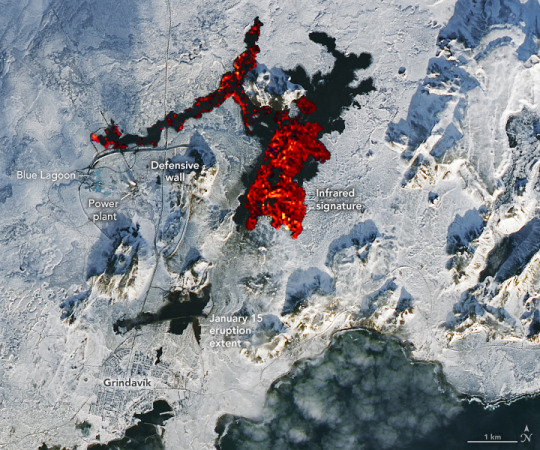
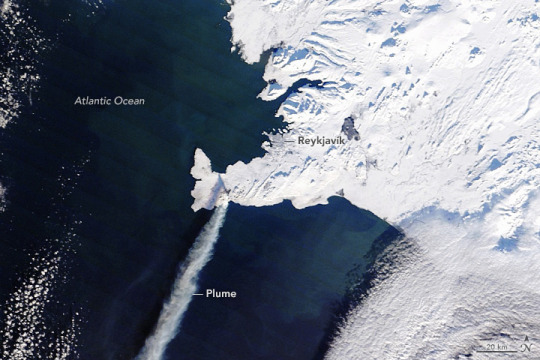
Another Eruption in Iceland
"After a lull in activity, fresh lava has once again poured from the Reykjanes peninsula in southwestern Iceland.
The latest eruption—the third in the region since December 2023—began early on February 8, 2024, with lava spraying up to heights of 80 meters (260 feet) along a 3-kilometer (1.8-mile) long fissure near Mount Sýlingarfell. The small peak is north of the fishing village Grindavík and east of the Svartsengi power station and Blue Lagoon geothermal spa.
The image above was acquired on February 10, 2024, by the OLI-2 (Operational Land Imager-2) on Landsat 9. Infrared and visible observations (bands 7-6-3) have been overlain on a natural-color image to help distinguish the heat signature of the lava. Still recent but cooler lava expelled near Grindavík in January appears black.
The topography around the fissure meant that much of the fresh lava flowed east into unpopulated areas rather than south toward Grindavík. Some lava also flowed west into the vicinity of the power plant and spa.
Earthen defensive walls protected both facilities, though lava did burn through a key hot water pipeline and two roads. According to the Icelandic National Broadcasting Service RÚV, authorities are in the process of restoring hot water to homes in the area after conducting repairs on the pipeline.
About seven hours after the eruption began, the MODIS (Moderate Resolution Imaging Spectroradiometer) on NASA’s Terra satellite captured this image of a plume of gas and ash streaming to the southwest. This eruption was effusive—not explosive like the Eyjafjallajökull eruption in 2010—and the plume contained minimal ash, so it did not cause any disruptions to either domestic or international flights.
Volcanic plumes like the one shown here typically contain water vapor, sulfur dioxide, carbon dioxide, and small amounts of other volcanic gases. Researchers from the Icelandic Met Office and the University of Iceland have noted that, at times, magma has interacted with groundwater, adding to the amount of water vapor in the plume. The TROPOMI (Tropospheric Monitoring Instrument) on the Sentinel-5 Precursor missionobserved sulfur dioxide (SO2) within the plume, Michigan Tech volcanologist Simon Carn noted on X.
After the initial burst of activity on February 8, the intensity of the eruption faded. In an update on February 9, the Icelandic Met Office reported that seismic sensors had stopped detecting volcanic tremors and that a recent drone flight showed no activity over the eruption site—signs that the latest eruption was ending.
However, on February 12, the agency reported that the land surface above an underground magma reservoir near Svartsengi had again begun to swell by 0.5 to 1 centimeters per day, a rate similar to what was observed prior to other recent eruptions. “It is therefore highly likely that the cycle continues in a few weeks with another dyke propagation and a volcanic eruption,” the agency said."
NASA Earth Observatory image by Lauren Dauphin, using MODIS data from NASA EOSDIS LANCE and GIBS/Worldview. Story by Adam Voiland.
8 notes
·
View notes
Text
How GIS Is Transforming Ambulance Accessibility and Response Time Analysis
The Emergency Response Gap
In critical moments, every minute matters. Yet many cities struggle with ambulance delays caused by traffic congestion, poor road connectivity, and uneven healthcare facility distribution. Traditional planning methods don’t always capture the full picture of how fast an ambulance can reach patients especially in growing urban or remote rural areas. That’s where Geographic Information Systems (GIS) are making a vital difference.

Mapping Accessibility with GIS
GIS brings a spatial dimension to emergency planning by letting users visualize ambulance reach in ways that spreadsheets simply can't. With tools like Isochrones, Buffer Zones, and Vector Layers, it’s now possible to see exactly which areas fall within a 10-, 15-, or 20-minute ambulance response zone and which do not.
In one of my recent mapping projects, I used vector data for hospital locations and combined it with city road networks. With the Buffer Tool, I mapped accessibility zones around ambulance hubs and compared them with residential clusters. The analysis highlighted critical coverage gaps places where help might not arrive fast enough.

By seeing these zones on a map, the problem shifts from abstract theory to visible urgency. It becomes clear where additional ambulances or medical sub-centers are most needed.
Why This Matters: From Maps to Action
The power of GIS lies in its ability to guide real-world improvements. With travel-time maps and spatial overlays, planners can:
Propose new ambulance posts in underserved areas
Justify investments in road upgrades to improve response times
Design routes that avoid bottlenecks or risky intersections
Assess the emergency coverage of newly built hospitals or clinics

This data isn’t just helpful, it’s essential for proactive planning. It helps ensure that emergency services are not only available but truly accessible when and where they’re needed most.
Who Uses GIS for Emergency Planning?
GIS tools are now used by public health departments, emergency service coordinators, urban planners, and nonprofits working on health equity. Even researchers and students are using web-based GIS platforms to explore spatial inequalities in emergency care.
Thanks to intuitive tools and visual outputs, these analyses are easier to share with local officials and communities, making the case for better health infrastructure much more persuasive.
Easy Mapping with GIS platforms
You don’t need to be a GIS expert to explore ambulance accessibility. Platforms like MAPOG let users upload spatial data, create coverage zones, and visualize response times all from a browser.
With drag-and-drop features, vector file support, and travel-time analysis tools, MAPOG makes it easy to spot the gaps in emergency access. Whether you're building a proposal for a new ambulance hub or analyzing city-wide readiness for medical emergencies, platforms like these bring clarity and confidence to your decisions.

Conclusion: From Delay to Delivery
Emergency planning can’t afford to be vague. GIS gives decision-makers the power to see the invisible, those neighborhoods at the edge of reach, where response delays can cost lives. By turning complex spatial data into understandable visuals, GIS helps cities plan faster, smarter, and more equitably.
If you’re working in public health, urban planning, or community research, try using a GIS tool like MAPOG. You may uncover insights that could lead to faster response times and saved lives.
Have you ever wondered how quickly an ambulance could reach your neighborhood? Now, with easy-to-use GIS tools, you can find out—and maybe help improve it.
1 note
·
View note